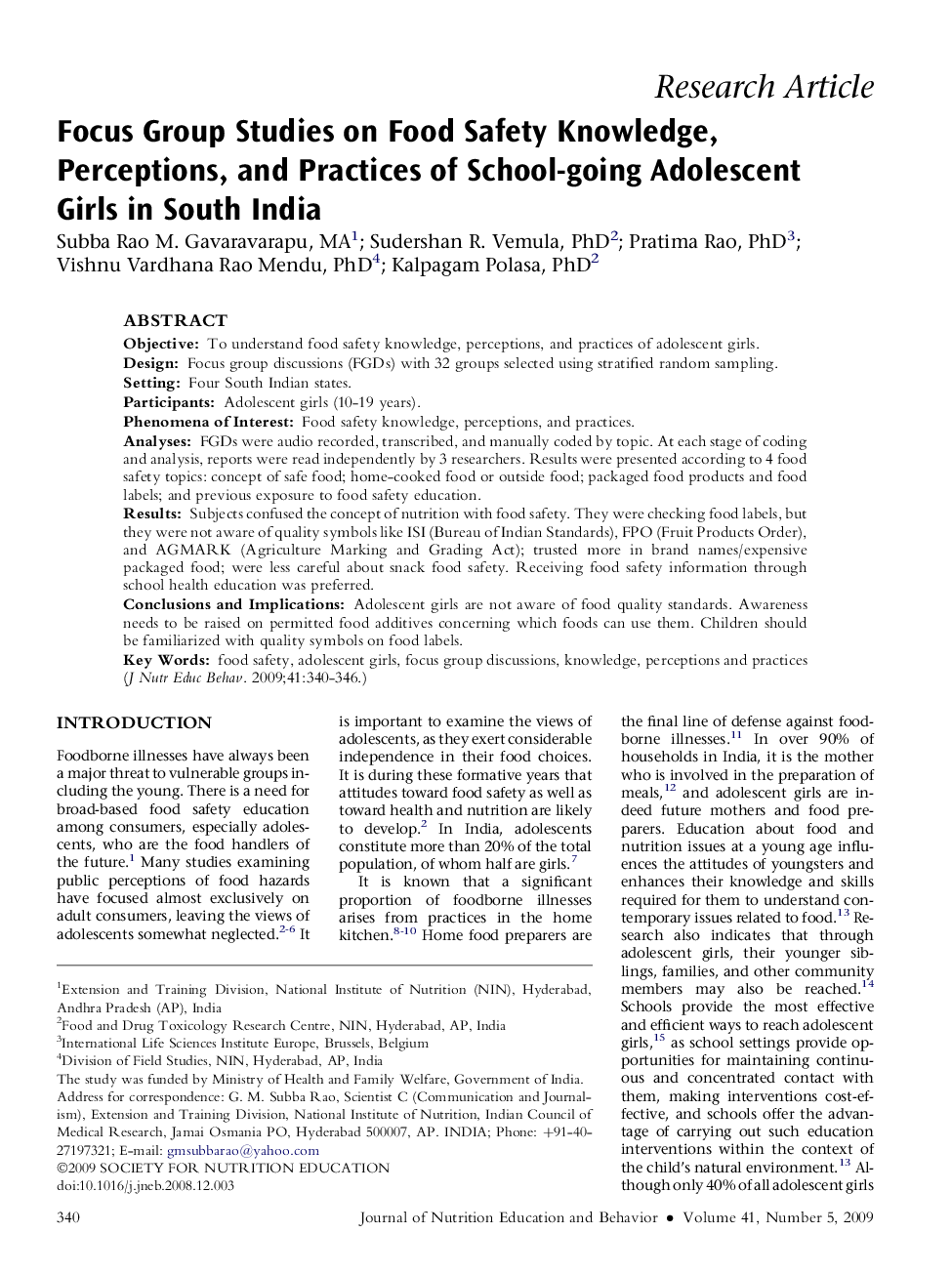| Article ID | Journal | Published Year | Pages | File Type |
|---|---|---|---|---|
| 363073 | Journal of Nutrition Education and Behavior | 2009 | 7 Pages |
ObjectiveTo understand food safety knowledge, perceptions, and practices of adolescent girls.DesignFocus group discussions (FGDs) with 32 groups selected using stratified random sampling.SettingFour South Indian states.ParticipantsAdolescent girls (10-19 years).Phenomena of InterestFood safety knowledge, perceptions, and practices.AnalysesFGDs were audio recorded, transcribed, and manually coded by topic. At each stage of coding and analysis, reports were read independently by 3 researchers. Results were presented according to 4 food safety topics: concept of safe food; home-cooked food or outside food; packaged food products and food labels; and previous exposure to food safety education.ResultsSubjects confused the concept of nutrition with food safety. They were checking food labels, but they were not aware of quality symbols like ISI (Bureau of Indian Standards), FPO (Fruit Products Order), and AGMARK (Agriculture Marking and Grading Act); trusted more in brand names/expensive packaged food; were less careful about snack food safety. Receiving food safety information through school health education was preferred.Conclusions and ImplicationsAdolescent girls are not aware of food quality standards. Awareness needs to be raised on permitted food additives concerning which foods can use them. Children should be familiarized with quality symbols on food labels.
